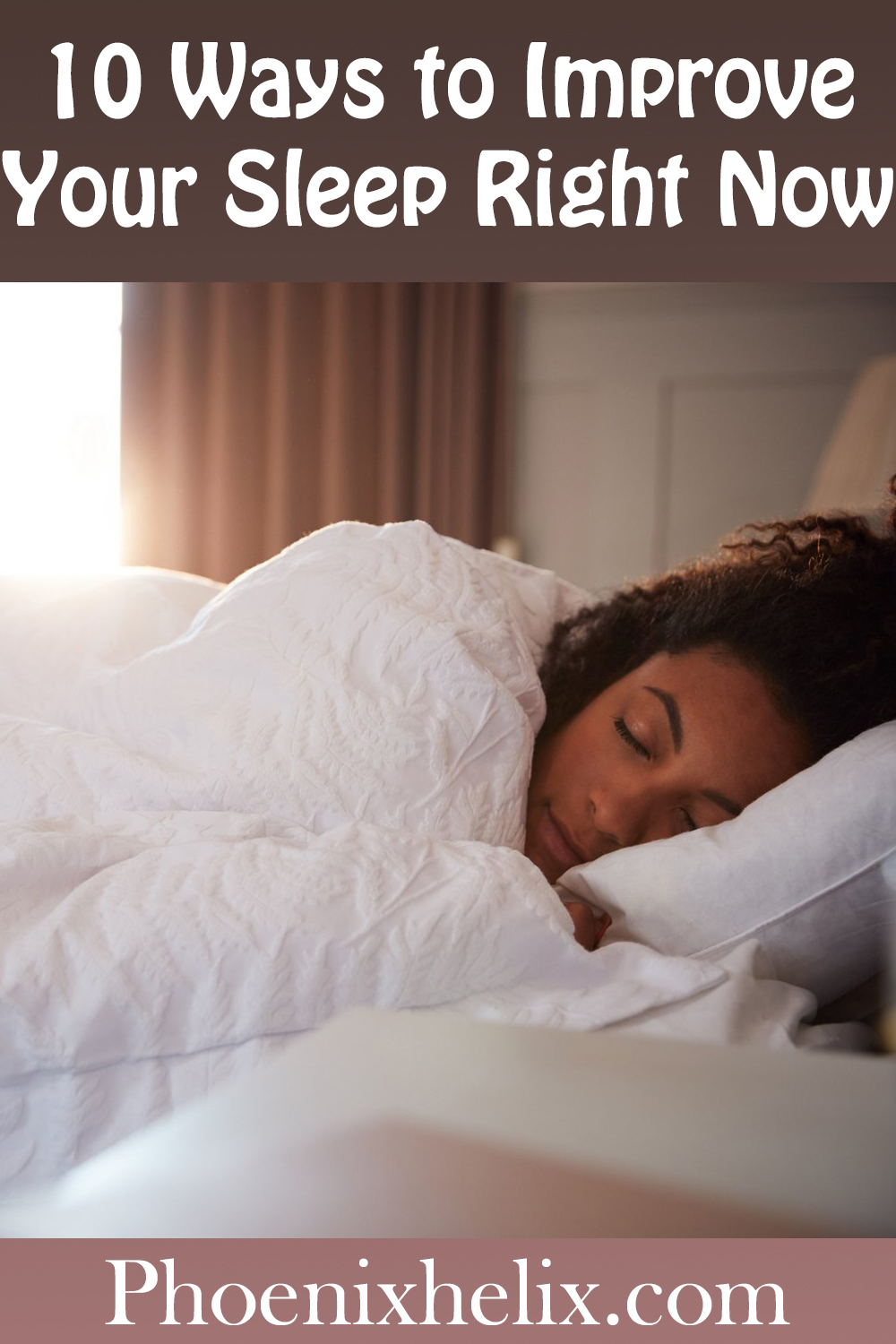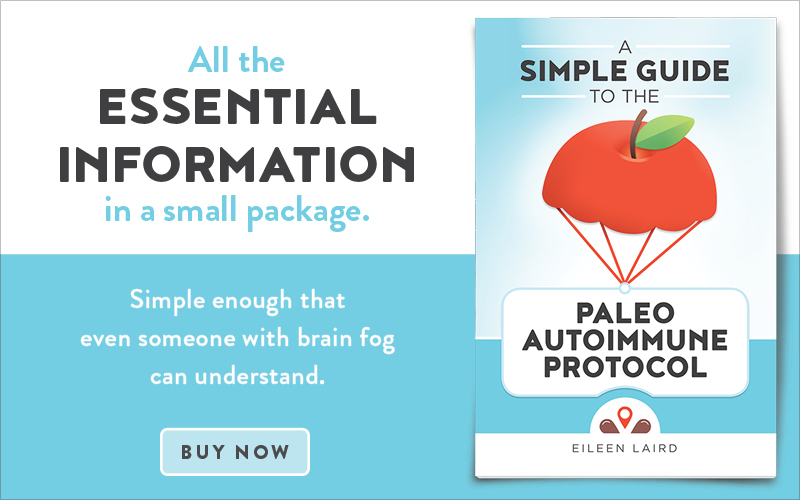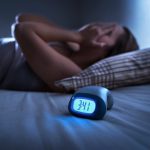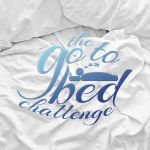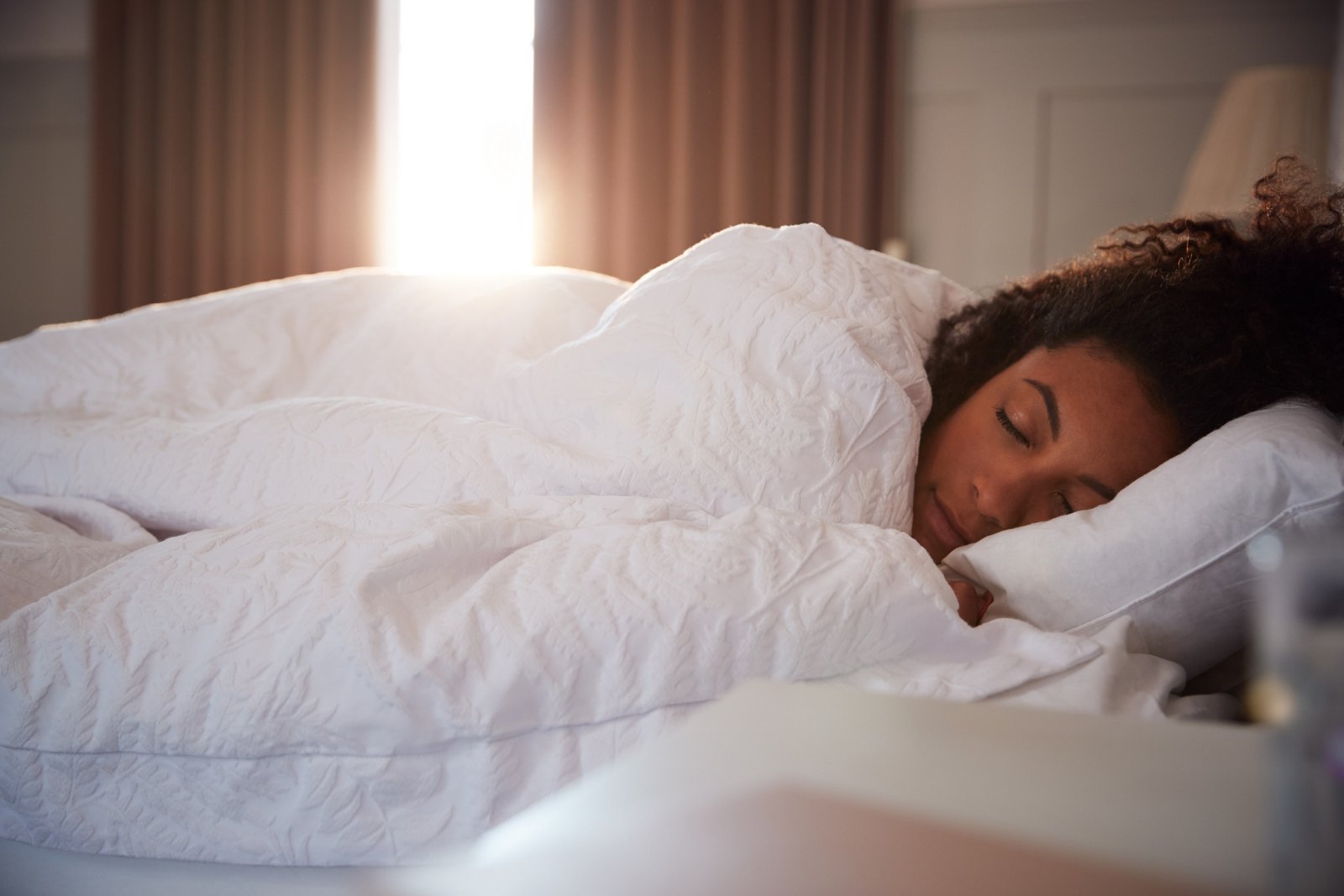
“Sleep is the golden chain that ties health and our bodies together.”
~ Thomas Dekker
The Connection Between Sleep and Autoimmune Disease
In the paleo autoimmune community, we often think of diet first when it comes to autoimmune health. But sleep can have just as big an influence, if not more. Lack of sleep increases inflammation, increases our susceptibility to infection, and stimulates the immune cells that become overactive with autoimmune disease. Poor sleep also increases our cravings for unhealthy foods, making it harder to stick with a healing diet. That’s why the paleo autoimmune protocol is about more than just food. Lifestyle matters just as much! The first step is to prioritize sleep, yet sleep isn’t always as simple as just going to bed. What if you have trouble falling asleep and staying asleep? Here are ten tips to help!
1. Go Outside in the Morning
Does it surprise you that the first tip for a good night’s sleep happens when you first wake up? What we do during the day has a big impact on how well we sleep at night. This is due to circadian rhythms. Our body has an internal clock, and there are certain cues that tell it the time of day. Sunrise tells the body to wake up. Sunset tells it to prepare for sleep. In modern life, the cues are often reversed. We spend most of our time indoors, often never witnessing sunrise or sunset. And with artificial light, our body gets the message that it’s always daytime. So, the first step to re-establishing healthy circadian rhythms is to give your body the right cues, both morning and night.
- Step into the sunshine. Don’t worry – if you’re not an early bird, you don’t have to get up for sunrise. But you do want to go outside in the morning, ideally within 1 hour of waking. Try to expose yourself to 20 minutes of sunshine (and if you don’t have that much time, even 5 minutes is helpful). You can go for a walk, or just sit on your front steps enjoying a cup of tea. Skip the sunglasses – the sunlight needs to reach your eyes. And try to leave your phone inside as well. The idea is to expose your body to the natural world, not the one contained in our phones.
- You may wonder if you can just sit in a sunny window instead. You can, but it won’t be as effective. When we step outside on a sunny day, we’re exposed to around 100,000 lux of sunlight. By contrast, the amount of light that comes through a sunny window is 100-2,000 lux, depending on the angle of the sun. That means you’re getting 50-1,000 times more light when you step outside. That’s a big difference!
- What about cloudy days? Then, you’re getting around 1,000-2,000 lux of sunlight. It’s still more than you would get inside, and there are other benefits to being outside as well. Exposure to fresh air and the sights and sounds of nature taps our body’s relaxation response, which is also helpful for a good night’s sleep.
- On rainy days, or ones that are darkly overcast, a light box can be helpful. Many people use them as mood boosters in the wintertime when the days are shorter, or in areas of the world where rain is common. But they also help establish healthy circadian rhythms. Choose one that emits 10,000 lux of light. Use it in the morning for about 20 minutes, set approximately 2 feet from your face. If you set it on a shelf slightly above your head, it more naturally mimics the angle of the sun and is a little easier on the eyes as well. Here’s the one I use: Verilux HappyLight.
2. Take Mini Stress Breaks During the Day
Many of us think that a few minutes of relaxation before bed should be enough to guide us into a deep night’s sleep. But it’s not that easy for our bodies to let go of the stress that’s built up over the day. Stress unbalances our circadian rhythms and increases inflammation. While we can’t eliminate stress from our lives, we can improve our response to it. Ignoring stress and “powering through” isn’t a good strategy, because our body is impacted whether we ignore it or not.
You don’t have to commit huge blocks of time. Most of us reach for our phones anytime we have a few minutes available. Try alternating that impulse with small stress breaks instead. By doing this throughout the day, you train your body to relax, making sleep much easier to achieve at night. I set a timer to go off once an hour as a reminder. Here are some of my favorite mini stress relievers:
- Deep breathing is always a great choice, and it can be done anywhere.
- If you work at a computer, stand up and do some stretches, or walk around for a few minutes.
- If you have the ability to go outside, do so, and tune into the nature sounds around you.
- If you can’t go outside, simply look around whatever room you are in and try to notice something beautiful. It might be the way the light is shining through the window, or a color that you particularly love, a plant that’s blooming, or a favorite photo.
- Put on some headphones and listen to a favorite song.
- If you’re with friends or family, ask for a hug.
- If you’re by yourself, do a butterfly hug.
- Close your eyes and visualize a favorite place or a favorite memory, and smile.
- Run your hands under warm, soothing water, and imagine it’s washing your stress away.
- Many meditation apps have 5 minute guided meditations. Insight Timer is free. Ten Percent Happier is a paid subscription, but they specialize in short meditations and even have 1 minute meditations available.
- EFT is another technique that only takes a few minutes. Here’s an introductory video. To learn more, listen to my podcast on EFT.
3. Give Up Caffeine, or Limit to 1-2 Cups in the Morning
I know this is a hard one for many people, but let me explain why. Caffeine is a stimulant with an average half-life of 5 hours. So, when you drink a caffeinated beverage, half the caffeine is still in your body 5 hours later. What about the other half – is it gone within 10 hours? Not necessarily. The CYP1A2 gene controls a liver enzyme that’s responsible for clearing 95% of the caffeine from our bodies, and each of us has a different variation of this gene. If you are a slow metabolizer, it can take over 12 hours to clear all the caffeine. Here’s the bottom line: Anyone who drinks caffeine in the late afternoon or evening will have some in their system at bedtime. But if you’re a slow metabolizer, that’s true even if you only drink caffeine in the morning. Also, the more caffeine you drink, the longer it takes your body to clear it.
There are other reasons to give up caffeine as well. It intensifies the stress response, doubling the release of epinephrine and cortisol, which again interferes with circadian rhythms. It can also disrupt blood sugar regulation and hormone balance, negatively impacting both sleep and autoimmune health.
Some delicious, caffeine-free, AIP-friendly alternatives are: lemon ginger tea, bone broth, turmeric latte, and herbal coffee. If it feels too intimidating to give up caffeine altogether, limit yourself to 1-2 cups in the morning, and consider lower-caffeine beverages. Tea usually has less caffeine than coffee, and green tea contains less caffeine than black tea. Also, keep in mind that chocolate contains caffeine as well: 3 oz. of dark chocolate has about the same amount as 1 cup of green tea. (Resource.)
4. Give Up Alcohol
Alcohol is removed during the elimination phase of the paleo autoimmune protocol, but many people reintroduce the occasional glass of wine or hard cider. If you’re in that category and you’re having trouble sleeping, try removing it from your life again and see if your sleep improves. While alcohol’s first effect is relaxing and may even help you to fall asleep initially, it leads to poorer sleep overall:
- It blocks REM sleep, which is the deepest and most restorative level of sleep.
- It alters neurotransmitters and circadian rhythms. For this reason, it’s common to wake up in the middle of the night after drinking alcohol and then have trouble falling back asleep.
- It makes you more prone to snoring and sleep apnea, interfering with breathing overnight.
- For all of these reasons, you’re more likely to wake up feeling groggy and unrested.
There are other reasons to give up alcohol as well. It increases intestinal permeability (which in turn lowers food tolerance). It has a negative effect on the microbiome. And alcohol is a toxin, which our body then needs to detoxify. Giving up alcohol takes all these burdens off your body.
5. Wear Amber Glasses at Night
In tip #1, I mentioned how artificial light confuses our internal clock. That’s why we want to expose ourselves to sunshine in the morning, to let our body know it’s daytime. Similarly, we need to help our body realize it’s evening when we live in homes with electricity and light. Step one is to lower the light in the house. Have fewer lights on after sundown. If you have dimmer switches, use them. Switch from overhead lights to side lamps if possible, and use bulbs with warmer (non daylight) hues.
Step two is to address the light that’s emitted from our screens: televisions, smartphones, e-readers, and computers. They emit a type of light that suppresses melatonin and stimulates wakefulness in the brain. One option is to turn them all off as soon as the sun goes down, but that’s not a reasonable solution for most people. And while some devices offer a low-light “night mode”, research is mixed on whether that helps or harms. There is a simple solution that works for all screens: wear a pair of amber glasses. They block the blue light that our brain associates with daytime, and add an amber hue that our brain associates with sunset. Here’s a high-quality pair. And if you wear prescription eyeglasses, they also sell clip-ons.
6. Set a Bedtime Alarm
When it comes to sleep, the human body likes routine. That means going to bed at the same time every night, and waking up at the same time every morning, regardless of whether it’s a workday or a weekend. It’s funny, because we know children need structure, but we pretend adults don’t. Then we suffer from insomnia and wonder why.
The best way to establish this cycle is by shifting the time you go to bed. Most people need 7-9 hours of sleep, and people with chronic illness are usually on the “more sleep” end of the spectrum. Do some quick math. What time do you need to get up in the morning? Subtract the number of hours of sleep you need. Subtract 1 more hour to wind-down and get ready for bed. And maybe another 1/2 hour to fall asleep. Then, set an alarm to go off every night at that time. For example, if you need to wake up at 7:00 am, and you know you do best with 9 hours of sleep, you’ll want to fall asleep by 10:00 pm. Subtract an hour to wind down and get ready for bed, and another half hour to fall asleep, and your bedtime alarm should be set for 8:30 pm.
Added bonus: When you get on a regular sleep cycle and start sleeping better, you may notice you no longer need an alarm in the morning. It’s one of the signs of being well-rested. Your bedtime alarm becomes the most important one.
7. Create an Evening Wind-Down Routine
There are many things we can do to help our bodies transition from wakefulness to sleepiness. You’ve done a lot of them already. A bedtime routine will support the circadian rhythms you’ve already started to establish. Here are some examples of things you can include. Experiment and see what combination works best for you:
- Try to turn your screens off an hour before bed. If you like to watch TV or read before bed, be sure to wear your amber glasses and choose relaxing storylines.
- You’ve already incorporated mini stress breaks during the day. This is an opportunity to do a longer meditation, a guided visualization, or simply listen to some relaxing music and let your mind drift. You can even listen to a sleep story, designed to help you fall asleep.
- If you enjoy writing, pull out your journal. You can simply do stream-of-consciousness and draw or write about whatever comes to mind. A gratitude journal is also a beautiful nightly practice. So is future self journaling.
- Temperature also has an impact on our ability to fall asleep and sleep deeply. Ideally your skin should be warm, but your room should be cool. Research shows this optimizes sleep. An easy way to do that is to take a warm bath or shower and then get into a cool bed.
8. Create a Sleep Sanctuary
Now, you’re ready to go to bed, and we want our bedrooms to support our sleep rather than disrupt it.
- First, turn out the lights, let your eyes adjust, and look around the room. Are there any tiny LED lights showing? Most rooms will have some, because they’re on so many things now. In my room, the light switch, some of the outlets, and some plugs all have these lights. Take some black electrical tape and cover those bright dots.
- Next, consider the light that will come into the room through your windows. This includes streetlights or security lights at night, and sunshine during the day if you sleep past sunrise. Choose a blackout option. You can buy inexpensive blackout curtains or invest in blackout cellular shades. If you want full darkness, buy cellular shades with tracks that block out all light. But even reducing the light while you sleep makes a positive difference.
- Next, consider noise. Exterior sounds often interrupt sleep by waking us up completely, or keeping us from entering deep sleep. My favorite white noise machine is the LectroFan. It has 10 different frequencies. This means I can change the pitch based on what I’m trying to tune out, whether it be barking dogs, voices, early birdsong, or lawn mowers.
- I mentioned in tip #7 that a cool room promotes sleep. This doesn’t mean it needs to be freezing, and everyone will have a different idea of what “comfortably cool” means. Experiment with different temperatures to see what works best for you.
- If possible, keep your smartphone out of the bedroom altogether. Research shows they draw our attention even when they’re turned off. They still sell alarm clocks. You don’t need a phone for that purpose. If you absolutely want your phone in your bedroom, put it in airplane mode, and use Screen Time to close access to your apps overnight.
- Lastly, you want your bedroom to feel relaxing. If it’s filled with stuff, declutter it. Decorate it in a way that’s soothing to you. Ideally, only use your bedroom for sleep, so your body gets conditioned to become sleepy as soon as you step inside. However, that’s not always possible. Sometimes homes are small and rooms have multiple uses. See if you can use your bedroom for relaxing, leisure activities only. For example, don’t exercise or work in your bedroom. Those are activities your body associates with being awake and energized.
9. Keep a Notebook By Your Bed
If your mind starts racing the minute you lie down, you’re not alone. Suddenly, there’s a list of things you want to remember to do tomorrow. Worries can also become loud and relentless, activated by turning off the lights. If you keep a small notebook and pen by your bed, you can sit up and write those thoughts and worries down. There’s something magical about the act of writing. It makes it easier to let go. You’re telling your brain that you can address that list tomorrow, and you don’t have to think about it any more tonight. If you buy a small red flashlight, that provides enough light to write without stimulating wakefulness (or waking up your spouse or partner).
I don’t recommend using the notes app on your phone, for multiple reasons. The screens are bright and the phones themselves are addictive. It’s very hard to pick them up and not look at email, social media, texts, or start playing games. Simple pen and paper work best.
10. Practice Self-Compassion – You Aren’t a Sleep Failure
Some of you reading this article will look at that list and feel overwhelmed. Lifestyle changes are hard! You don’t have to tackle this list all at once. You can take it in baby steps. Choose one of the tips that feels easiest to implement, and begin there. Do that for a few weeks, and see what difference it makes in the quality of your sleep. When that becomes an easy part of your routine, add another layer of sleep support. And remember, it’s not about perfection. If you stay up late one night, or give into a cup of coffee during the day, you aren’t a failure. It’s what you do most of the time that makes a difference.
For those of you reading this article who are already doing all of these things and still struggling with sleep, that can feel incredibly frustrating! Sometimes sleep troubles have root causes beyond these basics. Hormone imbalances have a big impact on sleep, especially the thyroid and perimenopause/menopause. Also, pain can keep people awake. So can anxiety. I’ve written a second article to help you! It covers these sleep obstacles and more. I also talk about sleep trackers, sleep supplements, and a special form of therapy that’s more effective than sleeping pills in resolving insomnia: Advanced Sleep Troubleshooting.
You May Also Be Interested In
Credit: image at top of page purchased from iStock.

